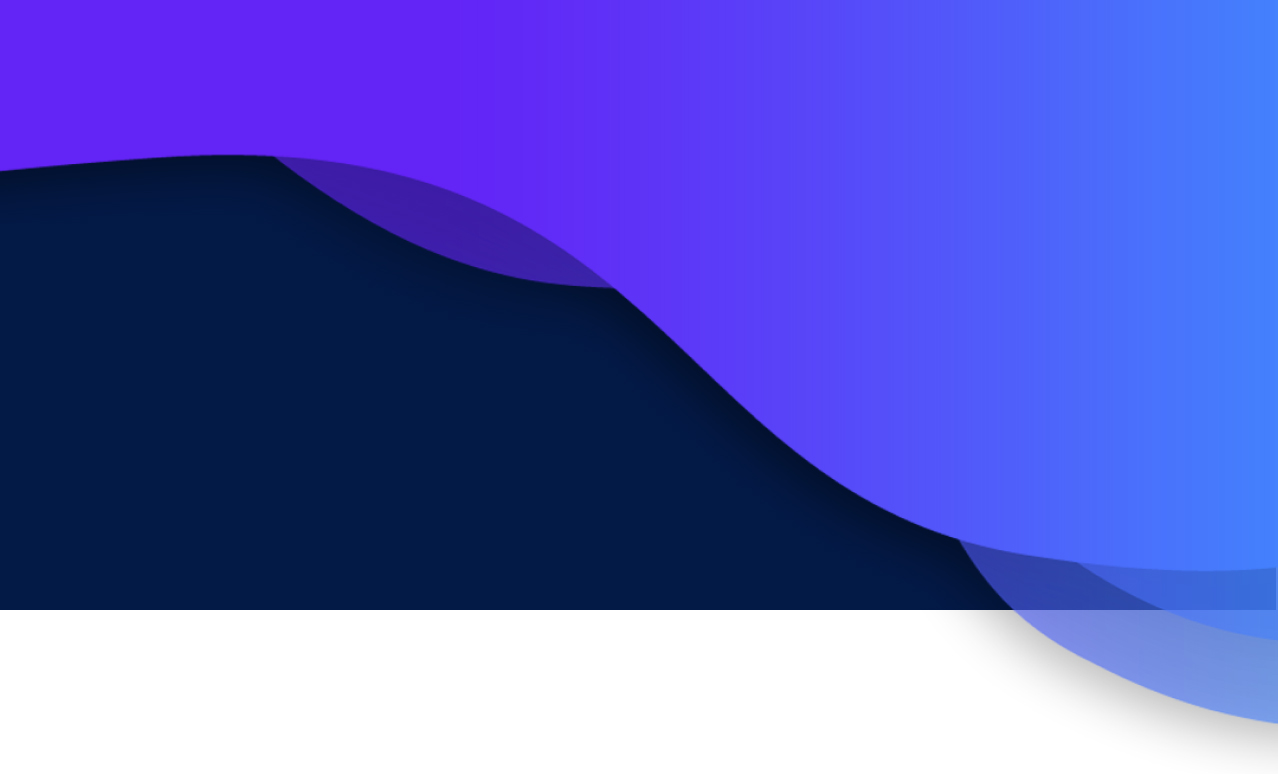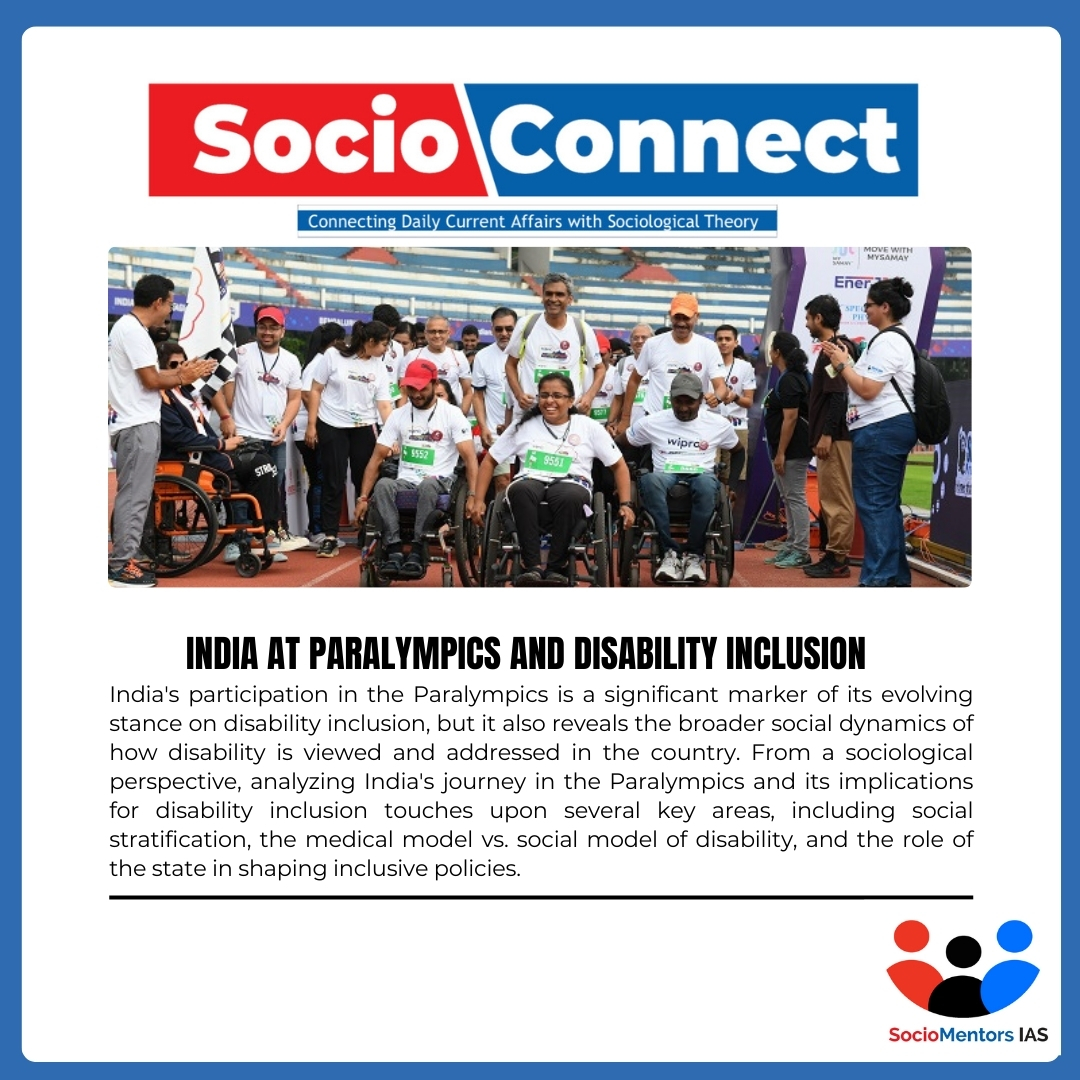India at Paralympics and Disability Inclusion – UPSC Sociological Perspective
September 11, 2024
According to the 2011 Census, there are around 26.8 million people with disabilities in India, which constitutes about 2.21% of the total population. However, these numbers are believed to be underreported. The majority of reported disabilities in India are related to movement, hearing, and sight.
Many significant obstructions restrict the growth and empowerment of the person with a disability. The major challenges include lack of education, limited financial resources, poor infrastructure, lacking a skill development programme, etc. Thus, it has been realised that the social protection systems make them leave their jobs and adopt the incentives generated from these disability benefits.
Perspectives on Disability
- Impairment vs. Disability: Mike Oliver distinguishes between impairment (a physical or mental condition) and disability (the social disadvantage imposed on individuals with impairments). Disability, in this view, is a product of societal responses and structures. Disability is not just a medical condition but a social construct. Society defines what is considered “normal” and “abnormal,” often viewing disability through a lens of deficit rather than diversity. This construction influences how disabled persons are perceived and treated.
- Stigmatization: Sociologically, stigma is a powerful tool that society uses to label and marginalize individuals who do not conform to established norms. Disabled persons often face stigma, which leads to social exclusion and discrimination.
- Labeling theory suggests that disability itself is a form of “primary deviance” – a departure from the norm that leads to the assignment of a deviant label. In this context, individuals with impairments are initially labeled as “disabled” due to a perceived deviation from the expected physical or mental norms.
- Barriers to Participation: People with disabilities often face significant barriers to participating fully in society, including physical barriers (e.g., inaccessible buildings), communication barriers (e.g., lack of sign language interpreters), and attitudinal barriers (e.g., prejudice and ignorance).
- Intersectionality of disabled: The experience of disability is often influenced by other social identities, such as race, gender, class, and sexuality. For example, women with disabilities may face different challenges than men, and disabled persons from minority ethnic groups may experience compounded discrimination.
Athletes and Issues faced by them
- Shortage of Facilities: There is a significant shortage of accessible sports facilities and infrastructure tailored for athletes with disabilities. Many Paralympians have to train under suboptimal conditions or even lack access to basic resources.
- Rural vs. Urban Divide: Athletes from rural areas face even greater challenges, as sports facilities in these regions are scarce, and those that exist are often not accessible to people with disabilities.
- Economic disparities: Paralympic athletes often receive less financial support from both government and private sectors compared to able-bodied athletes. This includes lower prize money, fewer sponsorship deals, and less investment in their training and development.
- Bureaucratic Challenges: Although there have been government initiatives like the Target Olympic Podium Scheme (TOPS) aimed at supporting Paralympic athletes, the implementation of these policies is often inconsistent. Athletes frequently face bureaucratic hurdles when trying to access funds and resources.
- Media Neglect: Paralympic athletes receive significantly less media coverage compared to their Olympic counterparts. This lack of visibility impacts public recognition and reduces opportunities for sponsorship and support.
Various government programmes also now promote disability inclusion. Rights of Persons with Disabilities Act, 2016 was enacted to align with the UN Convention on the Rights of Persons with Disabilities (CRPD). It broadens the definition of disability which mandates greater inclusion and accessibility across various sectors. The Act provides for a 4% reservation in government jobs and educational institutions for persons with disabilities. Launched in 2015, . Accessible India Campaign (Sugamya Bharat Abhiyan) also aims to make public buildings, transportation, and information accessible to people with disabilities.
Recent successes by Indian Paralympians on the global stage, such as at the 2024 Paralympics, have begun to change public perceptions. The performances of athletes like Sumit Antil, Avani Lekhara have inspired many and increased interest in Paralympic sports. The increasing visibility of successful Paralympic athletes contributes to changing societal attitudes and provides positive role models. However, systemic changes are needed to ensure that the media consistently highlights and supports the achievements of athletes with disabilities.



